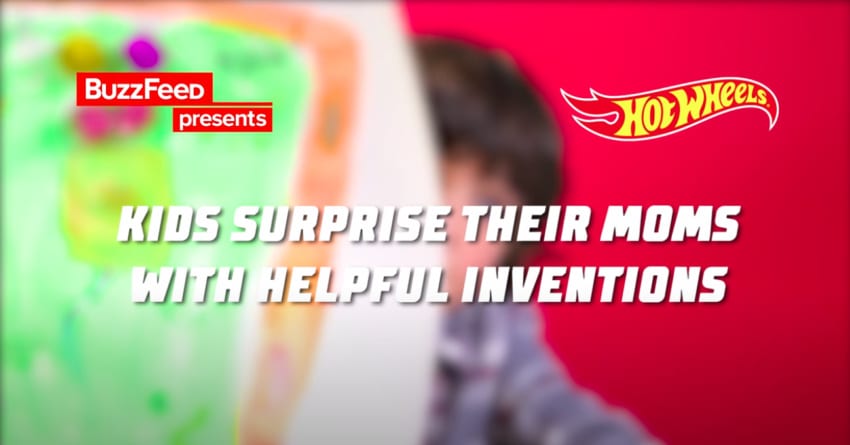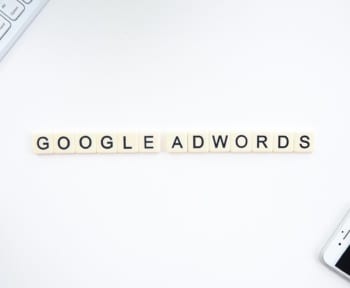With over 40% of US consumers believing that online ads are too aggressive in following them, there must be a better solution to your standard banner ad. Native advertising and content marketing are two solutions that probably face this consumer hate on ads the most.
There have been so many articles explaining how native advertising differs from content marketing, but the information on how to combine the two is scarce. Do you want to learn to master both? Hop on this 10-minute read to learn just that.
Native advertising vs content marketing
To use both native advertising and content marketing effectively, you need to understand the difference between the two.
Native advertising is a tactic. It’s a tactic that involves paying high-ranking media outlets to create sponsored content for your brand. This content looks just what the other content on the platform looks like but has an ad disclaimer and is highly branded. These ads are far better than banner ads in terms of engagement.
You can most commonly find these native ads on large online publications in the sponsored content section. Here’s a 2014 content piece from HuffPo that gives New Yorkers a rundown of great places to visit in their city. You may not notice it at first, but the piece is sponsored by a bottled water brand, Evian.
Now, that’s a native ad that is may fly under the radar and actually not have a desired effect on the viewers. This BuzzFeed 2018 collaboration with HotWheels is much more pronounced.
HotWheels helped BuzzFeed build a lab for the kids featured in the video and that made for a piece of interesting content. It’s targeted towards kids and parents, the target audience of HotWheels, and has the brand mentioned all over the place.
It also encourages people to head over to the HotWheels website to take part in the brand’s contest. Textbook native advertising right there.
Content marketing is first and foremost a strategy. It can be used as an umbrella term to mean any marketing activity that focuses on attracting people with content rather than chasing them with invasive ads.
However, the term “content marketing” can be used in a more narrow sense. Many mentions of this term mean using owned media to attract visitors. Some of the best examples online include Neil Patel’s blog and Moz.com. Having your own blog can be one of the best tools to support your content marketing strategy, let’s see why:
Both Neil’s and Rand Fishkin’s companies sell tools for SEO and one of the major ways they attract sales is by educating people. These two blogs produce high-quality content that provides a lot of value to the target audience. The audience, in turn, is more likely to actually buy the tools that may help them realize all the helpful tips they find on these blogs.
So we’re looking at two strategies that, in their core, involve inserting a covert ad in the content on a paid media platform and creating a platform of your own to bring in viewers. How do you combine the two?
Regular paid media native ads
The first way is to bring in the regular native advertising into your bigger content marketing campaign. Instead of simply commissioning a post from a media platform that would mention your name and finish it at that, offer a follow-up.
First, hunt down the media that have your core audience tuned in, and work on a piece of amazing content with them. But don’t end the content piece with a link to your website and an offer of a discount. End it with a link to a piece of related content over at your website.
This is important because a person on a media platform is probably not looking for a discount. They’re just consuming content and will more likely follow another piece of great content, not to an ecommerce website.
The best option for this would be offering to grab and ebook from your website. It does the job of engaging the visitor and having them head over to you, and it may give you this lead’s contact information if you hide the ebook behind an email wall.
Now, you may not have the budget for getting a collaboration with Huffington Post or Buzzfeed, but that’s not the only two websites you can work with. Plenty of mid-sized blogs with 50-300 thousand followers outright offer to work with them. Here’s a medium travel blog as an example.
Find enough brand ambassadors like this one, and you may see a huge increase in sales.
Integrate native advertising into guest posts
If you don’t have the budget for that kind of advertising, you can do native advertising smarter. Even though content marketing is mostly focused on attraction to owned media, working with other media to attract readers over to your blog is a common practice.
Since contributing guest posts to other blogs is something you probably already do as a part of your content marketing campaign, you may as well enhance it to become more like a native ad.
Now, this doesn’t mean you should flat out ask readers to buy your product. Explain how to do something with the tool you’re selling, illustrate how your product or business works, or simply emphasize the fact that you’re an expert in the field.
Affiliate native ads
Buzzfeed and The Guardian are not the only ones offering native ad placements. Plenty of smaller websites will write a native article featuring your company or feature you in a list for a reimbursement.
This is a bit different from your typical native advertising. Instead of commissioning a one-time sponsored article from a big media company, you get featured on a blog multiple times. In your typical affiliate marketing, the price of this would be a commission on sales that result from this blog’s readers. However, if you find a blog that’s willing to cooperate, you can broker any kind of deal.
Explore other formats
Most people think about writing an article when they want to include native advertising into a content marketing campaign. This is largely because you learn about native advertising by looking at Forbes, HuffPo, and other big publications running sponsored content campaigns for big businesses.
But the world is moving away from giant news websites being the only media. Likewise, interesting content doesn’t automatically mean an article. Social media like Instagram and YouTube offer opportunities for visual content marketing.
This may be another content marketing opportunity you can be looking into. Integrate your content marketing campaign with influencer marketing, and you may be looking at a significant increase in traffic or sales.
Most businesses would go with Instagram as it’s the easiest platform of the two to master. To get ahead on Instagram using this type of marketing, you will first need to find a pool of influencers that talk about products on your market.
It would be extremely easy if you sell products online, cosmetics or clothes, but even the construction industry now has a huge influencer on Instagram. You may find that it has influencers in your industry as well.
Contact them and ask for a collaboration. From then on, your options are limitless. You can run a standard ad campaign, create content together, get featured on their Instagram stories, etc.
Now, if you feel like your industry is not fit for Instagram and you didn’t find a great influencer on the platform, you may want to give YouTube a try.
YouTube has a much larger and more varied audience, and there isn’t an industry that’s not covered. You will find an influencer on the platform for anything from home renovation to gourmet foods.
The problem is, it would be hard for most businesses to get visitors from YouTube engaged in their content. Most ecommerce businesses don’t have a YouTube channel since it would take too much effort.
If you want to explore YouTube content marketing, borrow what HotWheels did with their collaboration with Buzzfeed. They sponsored a piece of content about kids’ creativity and left a link below the video to their own contest on kids’ creativity.
If you can create something as engaging as that, incorporating YouTube into your content marketing campaign would be easy.
Wrap Up
Both native advertising and content marketing are so closely related that it’s easy to mix them up. However, one deals with large-scale strategy and generating leads on owned media, while the other is more about getting sponsored content deals on other media.
All you have to do is to use tips from this article and incorporate elements of native ads into your content marketing efforts to make them more effective.





